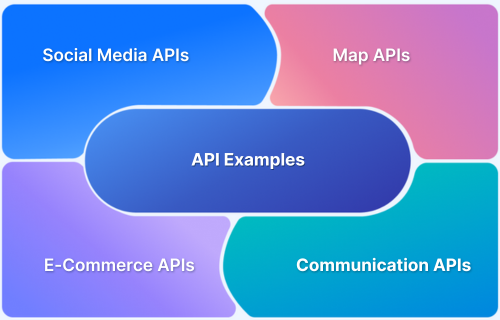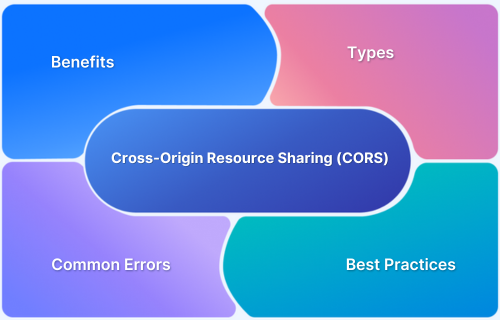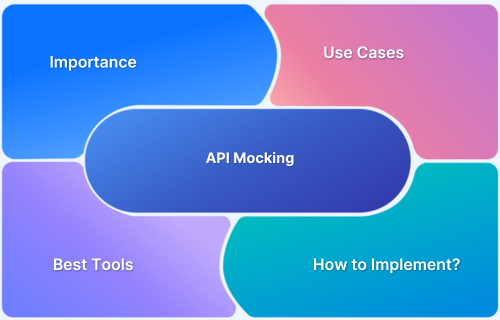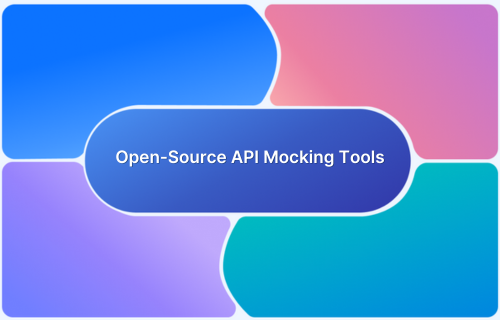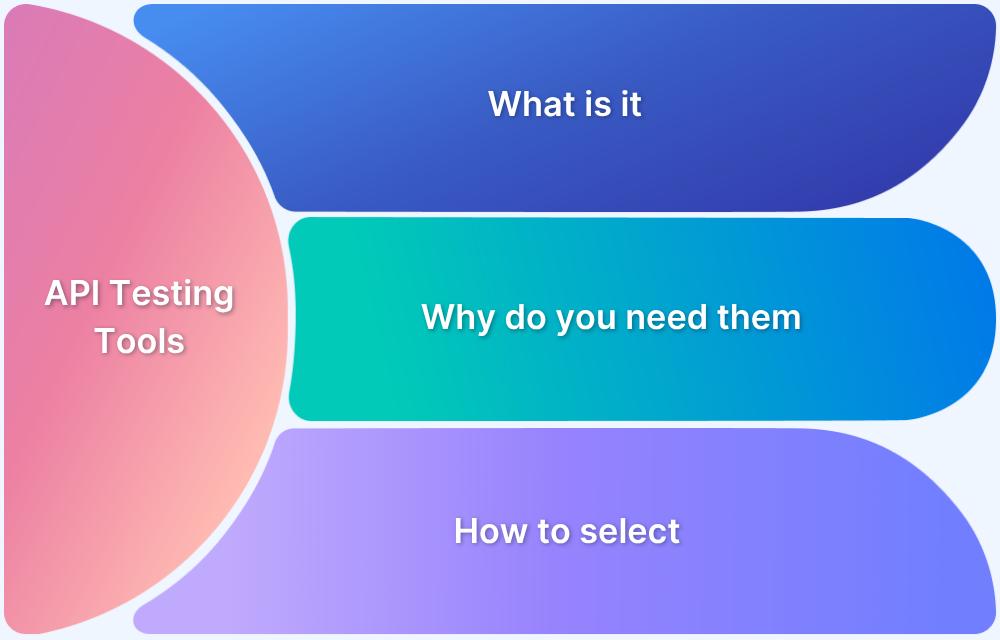Building modern APIs often means balancing flexibility, performance, and maintainability , a challenge traditional REST setups struggle to meet. Developers face issues like over-fetching data, rigid endpoints, and complex versioning.
GraphQL, paired with Python’s versatility, solves these pain points by enabling precise data querying, cleaner schema design, and easier scaling for evolving applications.
Overview
GraphQL has become a modern standard for building flexible and efficient APIs, and Python’s rich ecosystem makes it easy to get started.
Building a GraphQL API in Python:
- Define your schema: Outline data types, queries, and mutations that shape your API’s structure.
- Choose a library: Use frameworks like Graphene, Strawberry, or Ariadne to implement the schema.
- Create resolvers: Connect schema fields to business logic or data sources such as databases or APIs.
- Set up a server: Integrate with Flask, Django, or FastAPI to expose your GraphQL endpoint.
- Test and validate: Use tools like pytest, GraphQL Playground, or Requestly to verify queries and debug issues.
This article explores how developers can leverage Python’s leading GraphQL libraries and frameworks to build efficient, flexible, and well-tested APIs that scale with modern application needs.
What is GraphQL and Why Use it in Python?
GraphQL is a modern query language and runtime for APIs that allows clients to request exactly the data they need, nothing more, nothing less. Unlike REST, which often requires multiple endpoints to fetch related data, GraphQL provides a single, flexible endpoint that delivers precise results through structured queries.
Why Use GraphQL with Python:
- Rich ecosystem: Libraries like Graphene, Strawberry, and Ariadne simplify schema and resolver creation.
- Framework integration: Works seamlessly with Flask, Django, and FastAPI for web backends.
- Developer-friendly: Python’s clean syntax and strong tooling make API development faster and more maintainable.
- Testing and extensibility: Easy to integrate with testing frameworks like pytest and debugging tools like Requestly.
Top Python GraphQL Frameworks
Building a GraphQL API in Python is straightforward thanks to a range of mature frameworks that cater to different development styles and application needs. Below are some of the most widely used and reliable options.
1. Graphene
One of the earliest and most established GraphQL frameworks for Python. It is best suited for traditional web applications and projects built on the Django ecosystem.
Key Features:
- Schema-first approach with simple, class-based definitions.
- Seamless integration with Django, Flask, and SQLAlchemy.
- Strong community support and detailed documentation.
2. Strawberry
A modern, type-safe GraphQL library that leverages Python’s dataclasses and type hints. It is best suited for FastAPI users and teams adopting modern, type-driven Python development.
Key Features:
- Native support for async operations and type annotations.
- Excellent compatibility with FastAPI and ASGI servers.
- Built-in schema generation and developer-friendly tooling.
3. Ariadne
A schema-first GraphQL framework focused on flexibility and clarity. It is best suited for developers who prefer writing schemas directly in GraphQL’s native syntax.
Key Features:
- Schema defined using GraphQL’s Schema Definition Language (SDL).
- Robust support for custom resolvers, subscriptions, and middleware.
- Works smoothly with both WSGI and ASGI applications.
4. Tartiflette
A high-performance, SDL-first GraphQL engine built in C++ with Python bindings. It is best suited for performance-critical applications requiring fine-grained control and scalability.
Key Features:
- Optimized for large-scale and data-intensive APIs.
- Full support for async execution and real-time subscriptions.
- Modular plugin architecture for extending functionality.
5. graphql-core
The low-level reference implementation of GraphQL in Python, closely following the JavaScript specification. It is best suited for developers who need maximum control or prefer minimal dependencies
Key Features:
- Minimalistic and lightweight design.
- Ideal for building custom GraphQL frameworks or tools.
- Excellent for learning the internals of GraphQL execution.
Setting Up a GraphQL API Server with Python
Setting up a GraphQL API server in Python involves defining your schema, implementing resolvers, and connecting everything through a web framework such as Flask or FastAPI.
Prerequisites
- Python 3.9+ and virtualenv (or uv, pipx, conda)
- Basic understanding of schema, types, queries, and resolvers
1. Install
First, create and activate a virtual environment, then install Flask, Graphene, and the Flask-GraphQL extension.
python -m venv .venv && source .venv/bin/activate
pip install Flask graphene flask-graphql
2. Define schema and resolvers – schema.py
Next, define your GraphQL schema, queries, and mutations. Resolvers link your schema to in-memory or database data.
import grapheneclass Book(graphene.ObjectType):
id = graphene.ID(required=True)
title = graphene.String(required=True)
author = graphene.String(required=True)BOOKS = [
{“id”: “1”, “title”: “Clean Architecture”, “author”: “Robert C. Martin”},
{“id”: “2”, “title”: “Designing Data-Intensive Applications”, “author”: “Martin Kleppmann”},
]class Query(graphene.ObjectType):
books = graphene.List(Book, author=graphene.String())
book = graphene.Field(Book, id=graphene.ID(required=True))def resolve_books(root, info, author=None):
return BOOKS if not author else [b for b in BOOKS if b[“author”] == author]def resolve_book(root, info, id):
return next((b for b in BOOKS if b[“id”] == id), None)class AddBook(graphene.Mutation):
class Arguments:
title = graphene.String(required=True)
author = graphene.String(required=True)Output = Book
def mutate(root, info, title, author):
new = {“id”: str(len(BOOKS) + 1), “title”: title, “author”: author}
BOOKS.append(new)
return newclass Mutation(graphene.ObjectType):
add_book = AddBook.Field()schema = graphene.Schema(query=Query, mutation=Mutation)
3. Create the server – app.py
Then, set up a simple Flask app and connect it with the GraphQL schema using the GraphQLView.
from flask import Flask
from flask_graphql import GraphQLView
from schema import schemaapp = Flask(__name__)
app.add_url_rule(
“/graphql”,
view_func=GraphQLView.as_view(
“graphql”, schema=schema, graphiql=True # GraphiQL IDE enabled
),
)if __name__ == “__main__”:
app.run(host=”0.0.0.0″, port=8000, debug=True)
4. Run the application
Start your Flask server to host the GraphQL API endpoint.
python app.py
You can now access the GraphiQL interface at http://localhost:8000/graphql.
5. Test sample operations
Finally, run queries and mutations in GraphiQL or any API testing tool.
# Query
query {
books { id title author }
}# Filtered query
query {
books(author: “Martin Kleppmann”) { title }
}# Mutation
mutation {
addBook(title: “Refactoring”, author: “Martin Fowler”) { id title }
}
Consuming GraphQL APIs in Python (Client Side)
Once your GraphQL server is up and running, you can easily interact with it from Python to fetch data, execute mutations, and even handle subscriptions. Python offers simple tools to consume GraphQL APIs both synchronously and asynchronously.
Using the requests Library
The simplest way to consume a GraphQL API is through the requests module. You send a POST request containing your GraphQL query and any required variables.
import requestsurl = “http://localhost:8000/graphql”
query = “””
query {
books {
id
title
author
}
}
“””response = requests.post(url, json={“query”: query})
print(response.json())
This approach works well for quick testing or simple integrations, allowing you to query data or run mutations from any Python script.
Using the gql Client Library
For more advanced use cases, like schema fetching, variable management, or async support, use the gql client.
pip install gql[all]
import asyncio
from gql import gql, Client
from gql.transport.aiohttp import AIOHTTPTransportasync def main():
transport = AIOHTTPTransport(url=”http://localhost:8000/graphql”)
async with Client(transport=transport, fetch_schema_from_transport=True) as session:
query = gql(“””
query GetBook($id: ID!) {
book(id: $id) {
title
author
}
}”””)
result = await session.execute(query, variable_values={“id”: “1”})
print(result)asyncio.run(main())
The gql client supports asynchronous execution, making it ideal for high-performance or real-time applications.
Key Takeaways
- Use requests for simple queries, quick scripts, or one-off calls.
- Use gql for production-grade clients that need schema validation, subscriptions, or async performance.
- Always handle errors gracefully and include authentication headers when accessing protected endpoints.
This approach ensures your Python applications can seamlessly interact with any GraphQL service, whether for testing, integration, or automation.
Advanced Usage: Auth, File Uploads, Async & ORMs
As your GraphQL APIs evolve toward production scale, it becomes essential to handle advanced concerns such as secure authentication, efficient file handling, asynchronous execution, and seamless ORM integration for reliable data access.
Authentication and Authorization
- Use token-based authentication (JWT or OAuth2) and pass credentials via standardized headers.
- Enrich the request context with user identity and permissions so resolvers can enforce access control.
- Apply authorization at multiple layers: route-level guards, schema/field directives, and resolver-level checks.
- Prefer role- and attribute-based access control; log and monitor authorization failures.
- Disable or restrict introspection and detailed error messages in production to avoid information leakage.
File Uploads
- Implement the GraphQL multipart request specification for binary uploads, or expose a presigned-URL flow to offload storage directly to an object store.
- Validate file type, size, and content; perform antivirus scanning where appropriate.
- Store metadata alongside the asset (owner, checksums, retention policy) and return stable, CDN-backed URLs.
- Enforce quotas and rate limits to protect storage and network resources.
Async Resolvers and Subscriptions
- Adopt an ASGI stack for true concurrency and non-blocking I/O; mark resolvers that call external services as asynchronous.
- Consolidate outbound HTTP and database calls with connection pooling and sensible timeouts.
- Use GraphQL subscriptions for real-time updates and ensure backpressure, authentication, and reconnection strategies are in place.
- Guard async workloads with circuit breakers, retries with jitter, and idempotency where applicable.
ORM Integration and N+1 Avoidance
- Keep database sessions scoped to the request and commit or roll back deterministically.
- Prevent N+1 queries with batching and caching layers (e.g., dataloaders) and by planning the query shape thoughtfully.
- Leverage eager loading or select-in strategies for common access patterns; paginate consistently with cursors for large result sets.
- Validate inputs at the boundary; centralize mapping between GraphQL types and domain/ORM models for maintainability.
- Use transactions for multi-step mutations and enforce optimistic locking for concurrent updates.
Performance, Safety, and Observability
- Apply query complexity and depth limits; cap execution time and response size.
- Prefer persisted operations or safelisted queries to reduce parsing overhead and mitigate abuse.
- Add structured logging, request tracing (e.g., OpenTelemetry), and metrics for resolver timings, error rates, and cache hit ratios.
- Cache idempotent queries at appropriate layers; avoid caching mutations and sensitive fields.
- Regularly run load tests and fuzzing or negative tests to uncover hot paths and resilience gaps.
Enhancing GraphQL API Debugging with Requestly
Debugging GraphQL APIs can often be challenging, especially when dealing with complex queries, authentication headers, or staged environments. Requestly simplifies this process by allowing developers and testers to intercept, modify, and mock GraphQL requests in real time, without changing backend code or redeploying services.
How Requestly Improves GraphQL Debugging
- Inspect and Modify Requests: Instantly view and tweak GraphQL queries, variables, or headers before they reach the server to test different request payloads.
- Mock Responses: Simulate backend behavior by returning custom responses, helping validate client-side logic or test failure scenarios without touching the actual API.
- Record and Replay Traffic: Capture API calls and replay them to reproduce bugs, compare versions, or verify fixes quickly.
- Test Authentication Flows: Inject, remove, or replace tokens and headers to troubleshoot permission or session issues effectively.
- Collaborate Across Teams: Share debugging rules and mock setups with developers, QA engineers, and stakeholders for consistent test environments.
By integrating Requestly into your testing workflow, you can drastically reduce debugging time, improve visibility into request behavior, and ensure that your GraphQL APIs perform as expected across all stages of development.
Conclusion
GraphQL and Python together offer a powerful foundation for building flexible, efficient, and scalable APIs. With frameworks like Graphene, Strawberry, and Ariadne, developers can easily design expressive schemas, manage resolvers, and integrate with modern web backends. Beyond development, adopting best practices for testing, performance optimization, authentication, and ORM integration ensures that these APIs remain secure, maintainable, and production-ready.
By combining these techniques with effective debugging tools like Requestly, teams can streamline development, accelerate troubleshooting, and deliver reliable GraphQL services that meet the evolving needs of modern applications.



